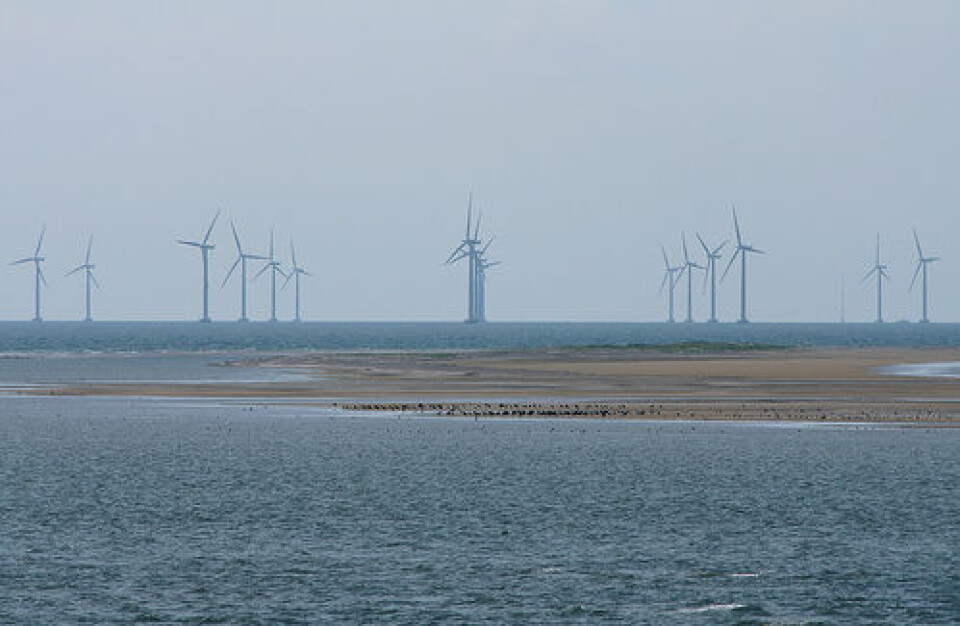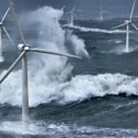Mobilizing O&G to Offshore Wind
Denne artikkelen er over ti år gammel og kan inneholde utdatert informasjon.
Av Tyson Weaver

When offshore wind energy headlines report “France launches $14,3B offshore tender” and “Vestas announces dedicated 7 MW offshore turbine” or “Energy giants Statkraft, SSE, RWE and Statoil join forces to develop 9 GW of offshore wind in UK waters,” one can clearly see the impending rise of a new wind energy application. Offshore wind has been getting a lot of attention for future expansion plans in the North Sea, where existing energy operations have been bustling for decades.
Norway is clearly an energy nation, but will offshore wind become its new oil and gas in the distant future?
In the transition towards a new energy paradigm, offshore wind is emerging as one solution with significant potential to deliver sustainable energy of the vast proportions required to tackle the daunting global carbon challenge. Norway has an estimated offshore wind potential of 14 000 TWh in up to 300 meter water depths and 1 000 TWh in less than 60 meter water depths . Norway has a world leading offshore industry cluster built on the backbone of fossil fuel extraction, with extensive experience in constructing and servicing offshore installations under rough North Sea conditions. Norwegian political forces have expressed intentions for Norway to become a key technology and service provider in the field of offshore wind energy, and several industrial cooperative research clusters have been partially state funded in line with these goals.
The European Union has set ambitious renewable energy targets for 2020, which should ensure a huge market for offshore wind energy products and services. Currently Statoil and Statkraft are the primary Norwegian companies engaging into the European offshore market at the developer level. Other Norwegian companies are also carving out technology development niches in floating offshore wind prototypes, boat design and fabrication, and foundation substructure engineering.
While the potential is significant, the transformation of the fossil fuel dominated Norwegian offshore cluster into an offshore wind cluster has so far been restricted by several key factors:
- Norway possesses a security of electrical energy supply through clean hydropower, with more small scale hydropower expected to come online soon
- Oil & gas (O&G) companies active in offshore industries view offshore wind as too politically reliant (subsidies) and thus less mature and instable of a market as opposed to existing profitable activities in O&G
- The impetus of financial support has been lacking to own/operate offshore wind energy projects in Norwegian waters (confirmed by Statkraft’s strategy to focus outside Norway on the UK market)
- The lack of financial support has resulted in a vacuum of activity in all areas of the value chain suggesting Norway has limited industry experience with on or offshore wind power

Thus there are few national incentives for domestic development of comparatively expensive offshore wind power, demanding the following question:
What is the role of Norwegian government in mobilizing resources towards domestic industrial development for the forthcoming European energy revolution?
Political forces in Sogn og Fjordane have put particular emphasis on exploiting the counties wind resources (on and offshore) for regional development . In correlation a steering group of over 40 regional based vested stakeholders has been established consisting of government and industry alike . However, in order to realize Norway’s potential as an international offshore wind energy facilitator and provider, policy frameworks need to be improved and targeted efforts are needed to promote the development and transition of Norway’s offshore O&G cluster into an offshore wind cluster . Recent positive actions include NVE’s report which worked to find areas suitable for the establishment of offshore wind power in addition to the six concessions granted for companies to test new concepts and designs.
However it need be duly noted that the argument about Norway pursuing offshore wind is more about industrial development, whereas in the EU the impetus is meeting EU 2020 carbon reduction objectives. Anybody following offshore wind in Norway knows that our new Energy Minister has proclaimed offshore wind to be too expensive, as current electricity price doesn’t support offshore wind cost levels (floating or fixed foundation). Should commercial scale offshore wind ever see a future here in Norway, it would need both the support of Enova for capital grant support in addition to production tied subsidies. Therefore in my sole opinion, the most likely scenario in the near 10 year term is the testing of new technologies with small scale demonstration parks, and not so much the up scaling of commercial sized offshore wind farms for electricity production (domestic use or export).
Given the recent acceptance of tradable green certificates with Sweden, we will see noticeable increase in småkraft in addition to onshore wind. The additional supply will put more downward pressure on wholesale market prices, which has the effect of worsening market conditions for more expensive offshore wind power. To this extent any offshore built in Norwegian waters will only likely be justified under the namesake of pursuing innovation, developing and testing new technologies, and or devising strategies of how to facilitate a mobilization of the offshore work force slowly away from declining oil and gas operations to a rising European market of offshore wind.







